A charm of Goldfinches? Well yeah. Can you think of a better description? It’s what we see every morning through the south-facing triple panes of our Net Zero dwelling: sometimes more than a hundred finches, fleeting, flitting, twitting, chasing, fluttering and flurting. A charm is totally what they are! And it’s just one of a whole flight of words, evolved over centuries, to describe flocks of bird species. Most of us will know a few like a gaggle of geese or covey of quail, maybe a murder of crows! But you may never have heard of a siege of herons or an unkindness of ravens. Some names accurately depict the character traits of the real species, at least in a humanoid sort of way. Some are good for a laugh, like an asylum of loons or an affliction of starlings! My all-time favorite is an exultation of larks! Find 100’s more in the book An Exultation of Larks by James Lipton or at wildbirdsonline.com.
Anyway, it’s Thanksgiving and I give thanks for the liveliness of birds and the charmed life they bring us. Far back as I can remember, this is one of my favorite times. Whatever cultural thing is going on inside, outdoors is awake to the feathered ones whose arrival announces the turning of seasons in our spot on the planet. I didn’t know the flock names as kid on our farm. Dusky Canada Geese arrive in the Willamette Valley about now in skeins I guess. Snow geese sweep the sky in wedges. My father taught me to imitate the voice of Honkers with my own voice as we hunted, calling them to the slough. They tell us Cinnamon and Blue-winged Teal travel in groups called springs. You hear them before you see them. The whiffling of their wings precedes them, careening low to the ground after dusk, seeking safe water.
Tundra Swans started wintering in the Valley in the early 60’s and now they seem to usher in advent each year, dotting the green grass fields in a vestry of white crystal. Some refer to swan flocks as a whiteness of swans. Some call them a ballet. That makes sense in morning flight, their graceful necks choreographing the first movement of the newest day. Then there are jacksnipe. They showed up toward the shortest days when I was young. They were scary to a kid. Walking along a waterway in the frozen grass, you never knew when you’d step on one…then all of a sudden, out of the quiet morning they’d fly up from underfoot screeching, swearing and cashushing…well I’d nearly wet my pants! They’re called a walk of Jacksnipe. I’d say a fright of snipe is more like it. My favorite feathered friend of winter, as a kid, was the barn owl. They were stealth hunters. I was glad not to be a vole. I’d be hiding in the duck blind half asleep in the still dark morning. Owl mother would make her last pass across the wet prairie before dawn, her wing feathers so soft she’d be right on top of me before I knew it. Maybe my pants were already damp from the snipe episode so no big deal, but if you’re a rodent you’re toast. Just sayin. The call a bunch of owls a parliament of owls. I think maybe they know something beyond our comprehension. Or is it just that politicians don’t really give a hoot? Whatever it is, they still trust the dark somehow.
If I digressed too far, I apologize. I just wanted to say we’re grateful for birds. And around the Thanksgiving table, if you can’t find another subject, maybe try a conversation of birds. For us, of course, it’s not just the charm of finches, oh no. Every day this past month we are greeted by, let me say, a diverse congress of winged beauties in our own backyard, a banditry of chickadees, a shimmer of hummingbirds and a scold of jays.
Every day we are greeted by a knot, a quarrel, a flutter of sparrows and I’m not sure we’ve accurately determined their exact sparrow-ness but we’ve good guesses. We don’t see them as much as the hummingbirds and chickadees. They like to hang out in Erin’s Honeycrisp tree around the corner or beneath the brussel’s sprouts. But we think they are Golden-crowned, White-throated and Lincoln’s sparrows.
Then there are the ones we don’t see often so, when they show up, we really pay attention.
The kettle of Cooper’s Hawks are extraordinary. Pretty sure they were attracted to our chickens but I think they actually prefer fresh chickadee! And a descent or is it a drumming ofwoodpeckers? We’ve never seen more than one Downy at a time. And the Bushtits
have no flock name in the book but when they show up I’m gonna say they are a quiver because when they hit town everything is vibrating. A Quiver of Bushtits: that works.
The others we see every day are the Robin, Red-breasted Nuthatch and Oregon Junco. I don’t see any name in the book for their flocks so I’m just going to go with abreast of robins (for obvious reasons), a descendant of nuthatches (because they mostly climb down the trunk) and a hopper of Juncos (because they do).
The last is the Spotted Towhee. We love this bird…hops everywhere on two feet. The distinct hues of deep brown and burnt orange are the color of autumn woodlands, but the most distinct of all is that scarlet eye. I wish had a scarlet eye.
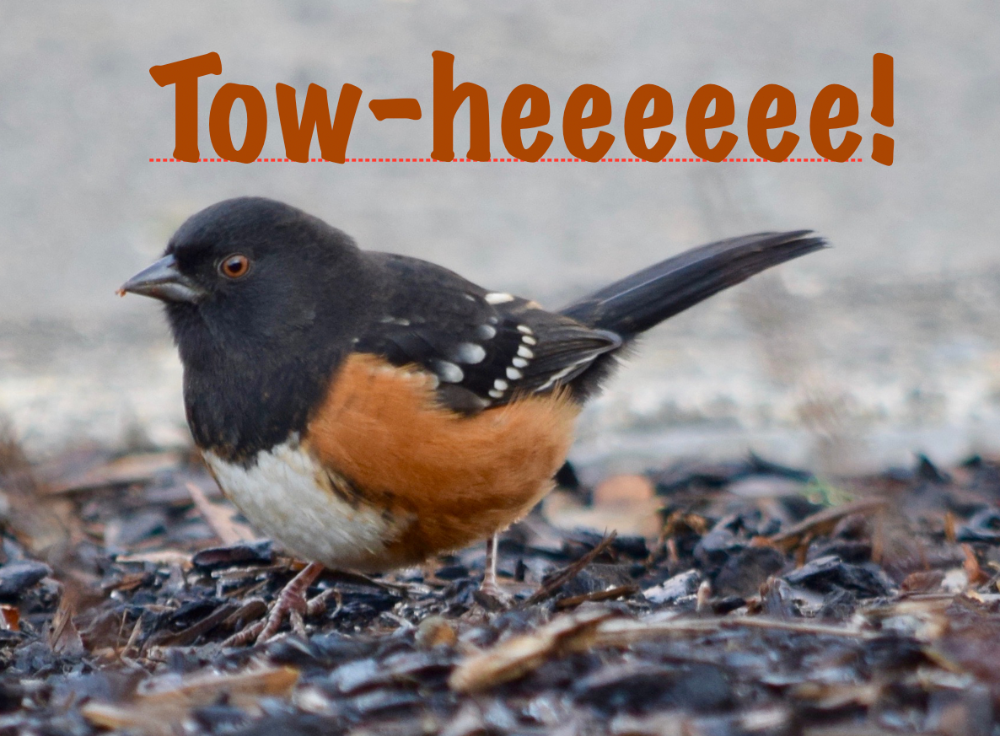
Back to our charm of Goldfinches, there’s some most uncharming news. If we continue our current rate of greenhouse gas emissions, American Goldfinches are projected to disappear from 23 states including New Jersey, Illinois, Texas, Arizona, and the Dakotas. The Audubon Society’s newest, ground-breaking report, titled Survival by Degrees: 389 Bird Species on the Brink, shows two-thirds of North American bird species are at risk of extinction from climate change. Two thirds. Wow.
Not a surprise though, huh? But it makes me think again of the Tundra Swans that started making our Valley a regular stopping place when I was a kid. I remember a cold December morning when I was maybe 12. I loved to hunt ducks and geese on our farm in winter. Never came home with much and that was okay. I loved being out, just being out and being a little closer to the wild, I guess. So I was in the duck blind this one morning and, from far away across the Valley I heard a voice unfamiliar to me. It sounded like a bleat or whistle or a trumpet I guess…but like the voice of one crying in the wilderness. I kept my ear to the wind listening for 15 or 20 minutes as the cry came closer and closer. And finally, I was surprised by the flight of 15-20 swans in one single straight line maybe 30 feet only above my head. And every once in awhile some soul in that formation gave voice. I remember how it echoed in the cold morning air to no one in particular and to everyone.
As I said before, a group of swans can be called a whiteness. Or a ballet. They can also be known as a Lamentation of Swans. We must join the swan in lament. There is much at stake. Not least of all, we could totally lose the souls from the face of this earth whose reason for being is to charm, choreograph and exult us, who give their lives daily so we can still quiver with joy and hope at the wonder of existence. What would life be without quiver?
Whatever you do on Thanksgiving, please celebrate life. Give thanks for the birds and those who care for them. Lament and then act. Right now, Congress is considering a bill to help us switch from fossil fuels to clean, renewable energy sources. Ask your members of Congress to support the Better Energy Storage Technology Act of 2019 and more! Go online to audubon.org, click on “Take Action,” scroll down to “Protect Birds from Climate Change.” If we act quickly to reduce greenhouse gas emissions, we can help improve the chances for the overwhelming majority of species at risk. Happy Thanksgiving!

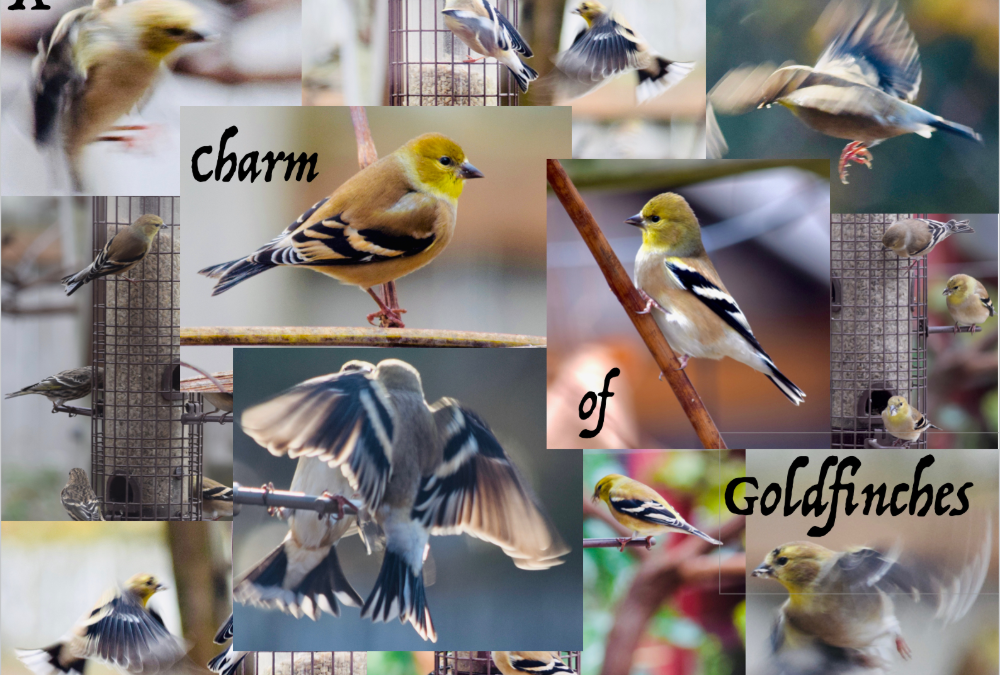
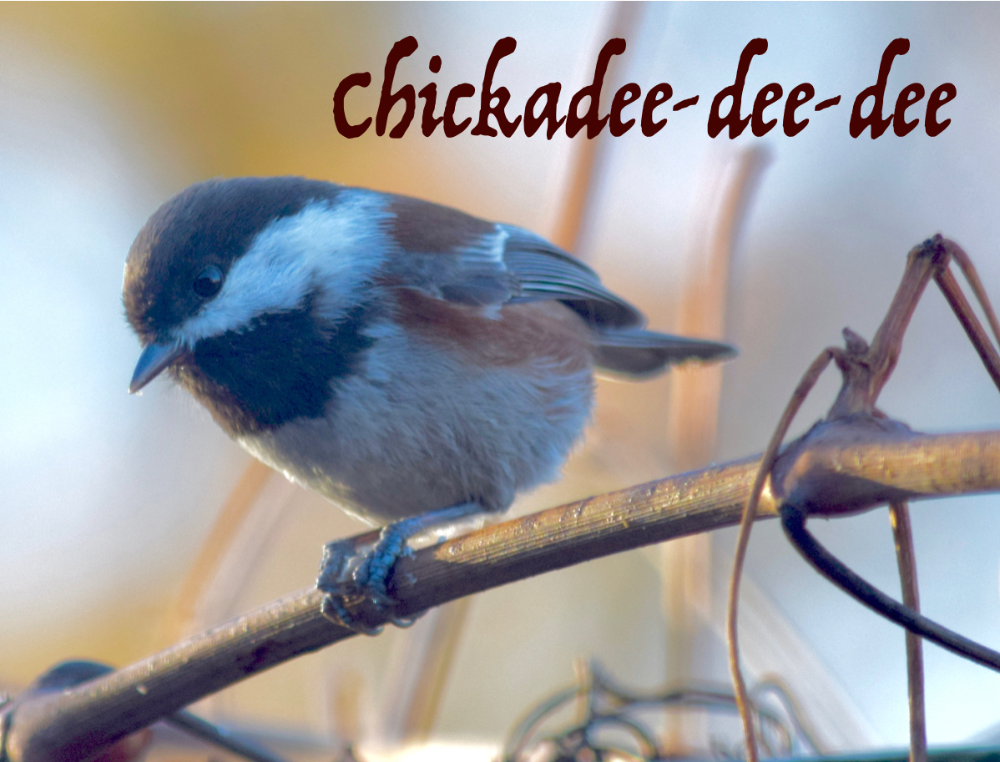
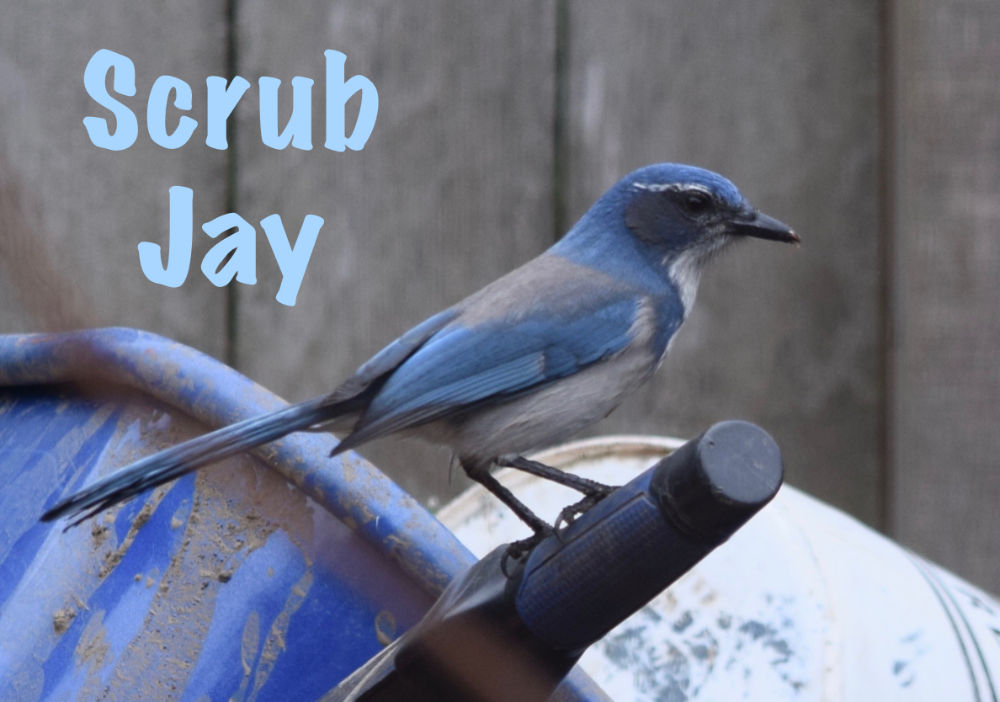
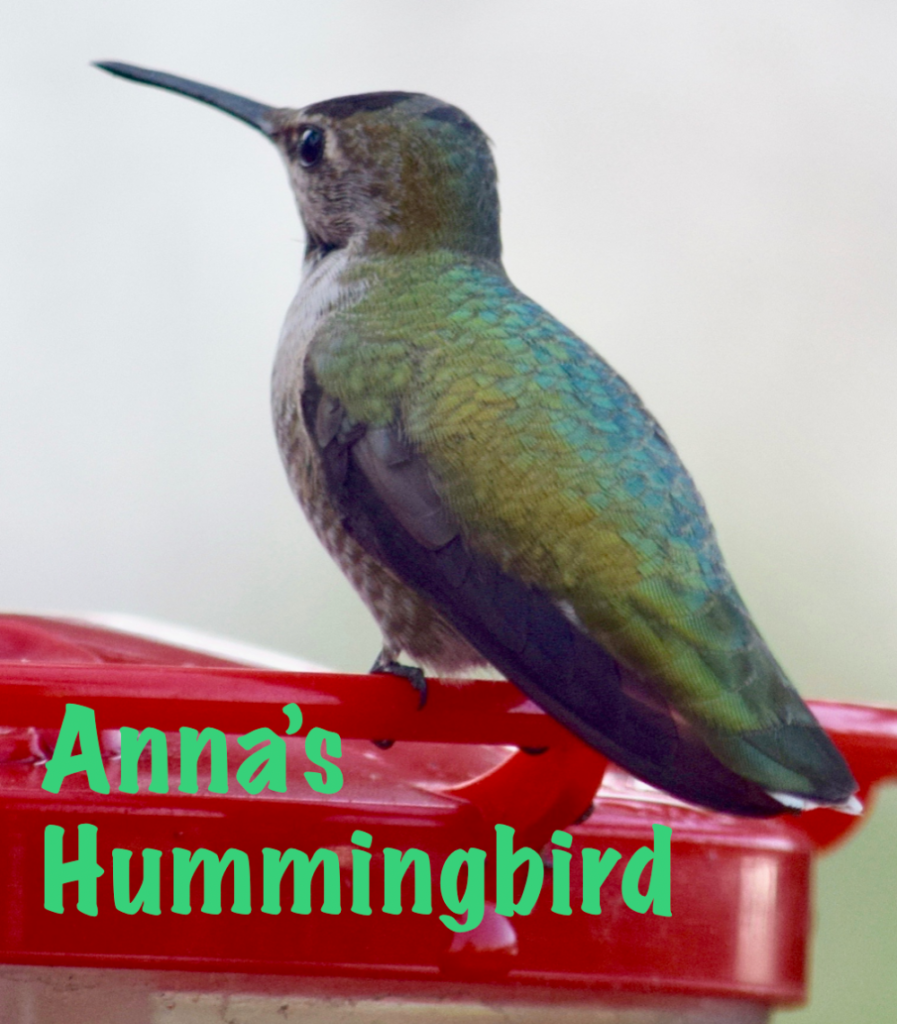
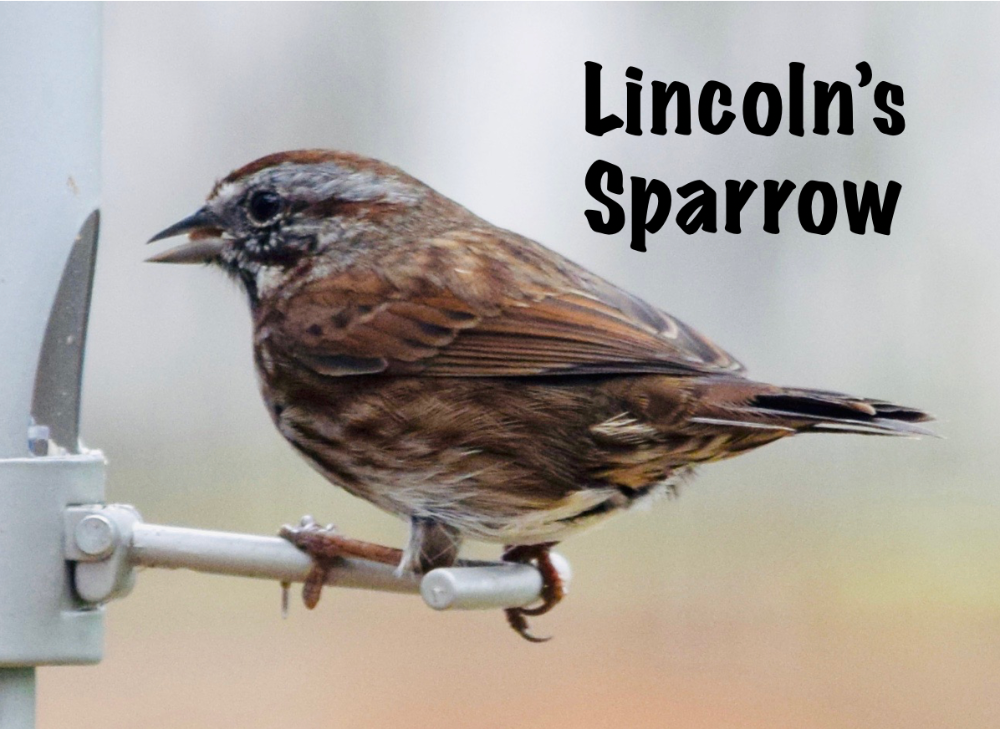
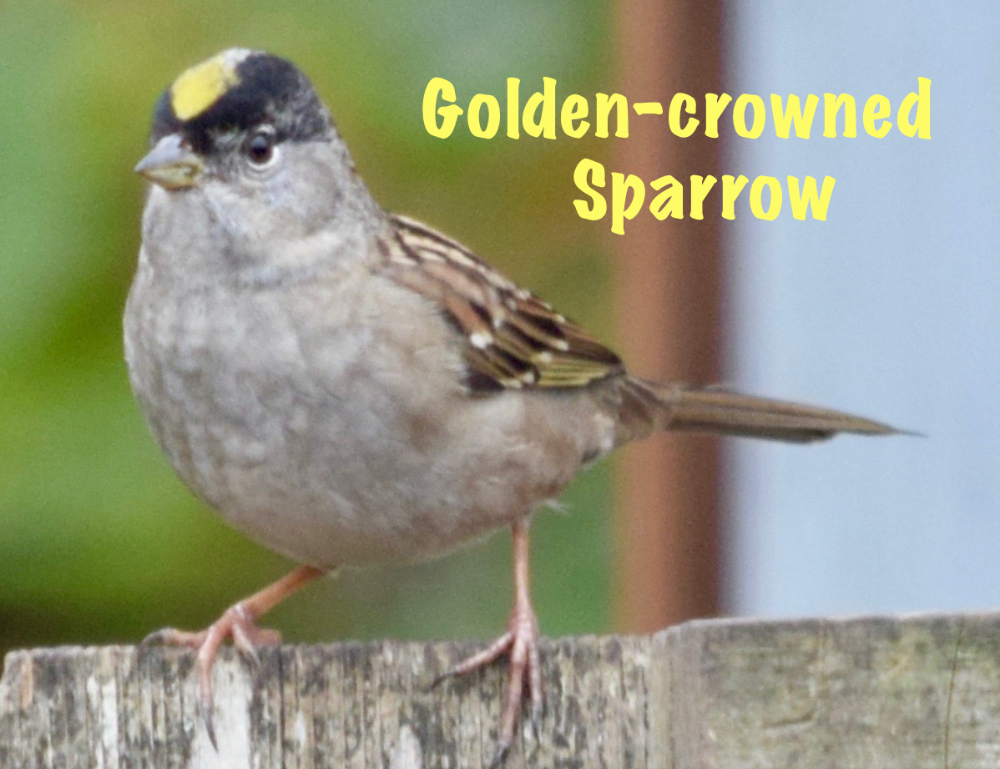
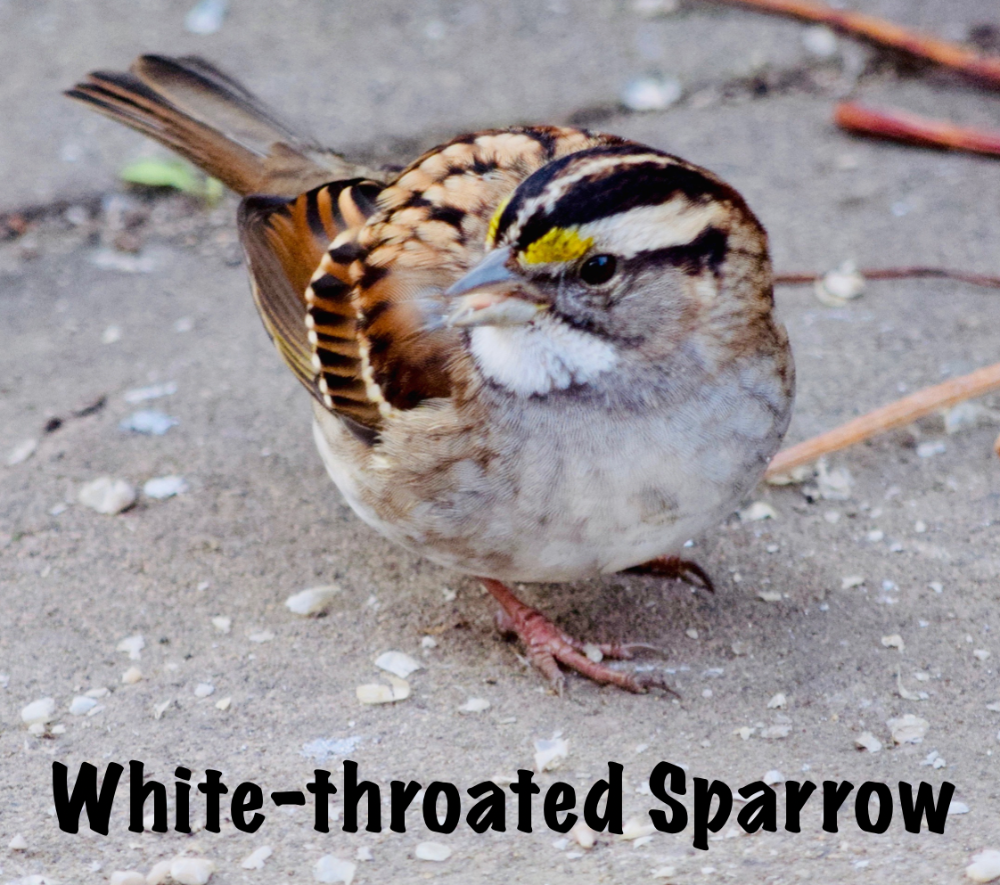

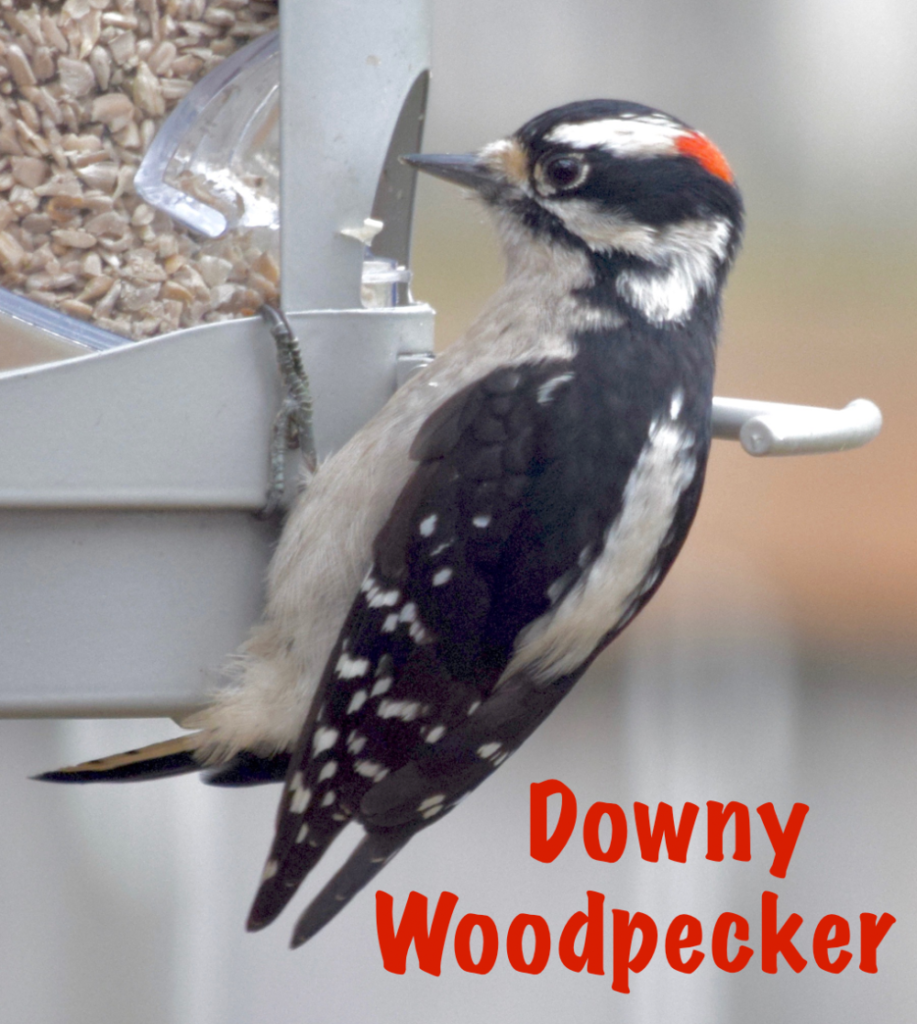
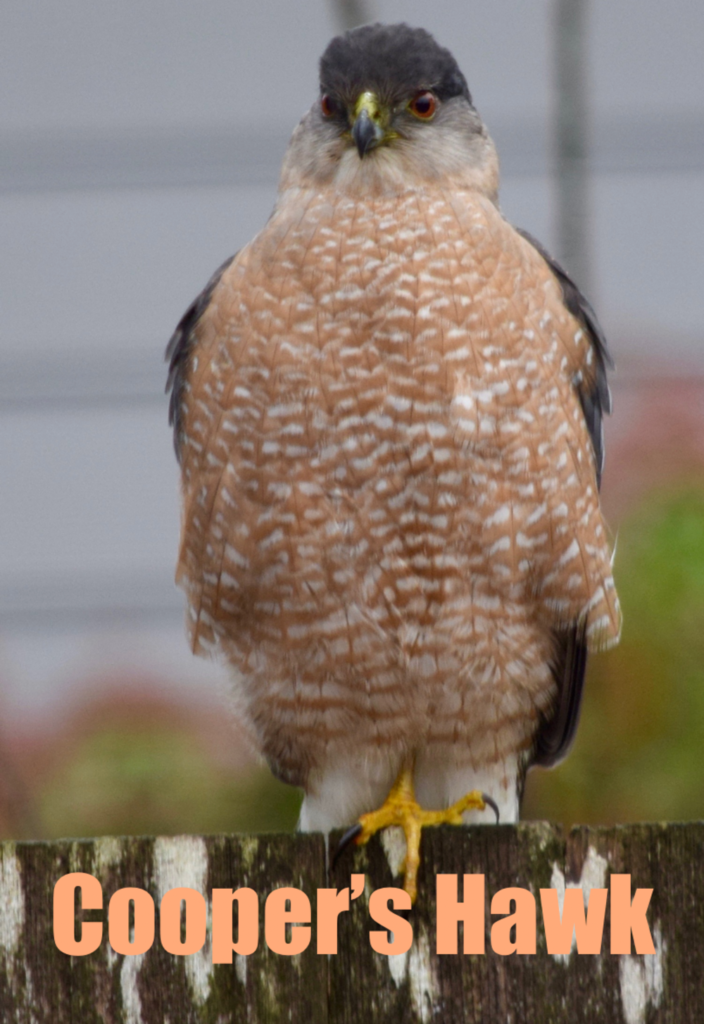
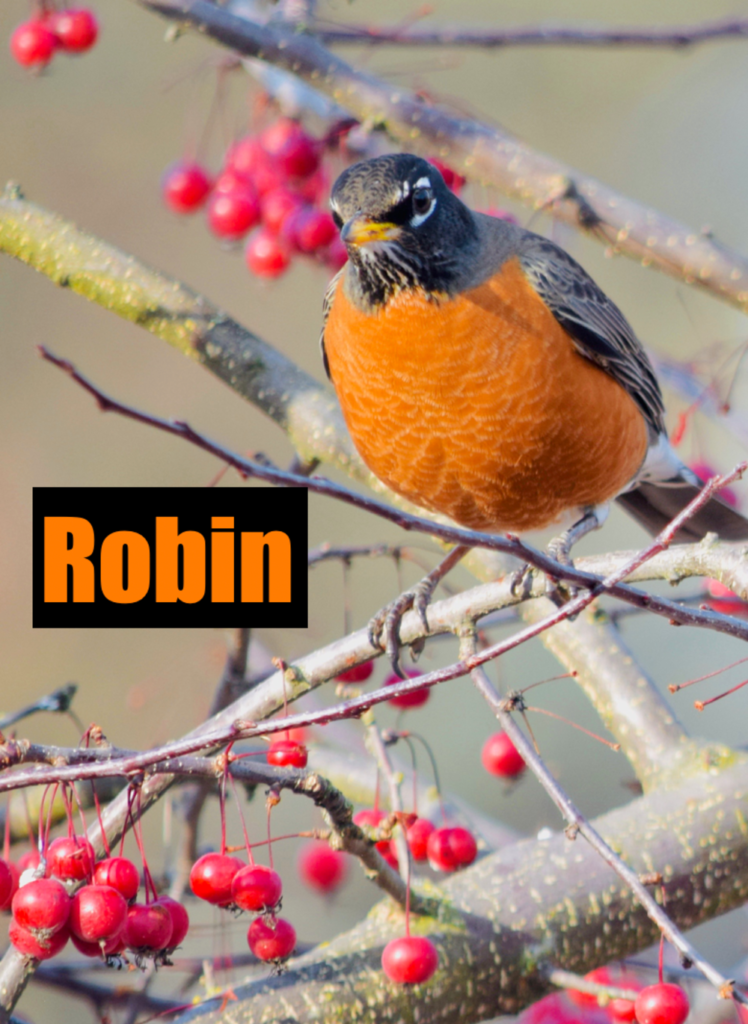
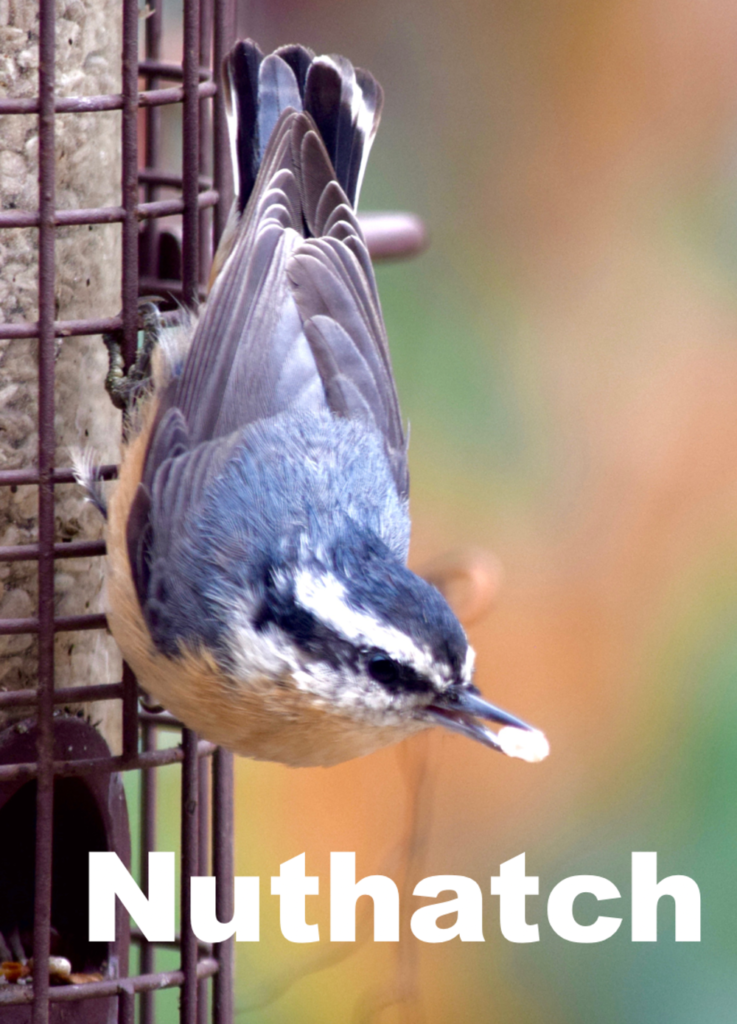
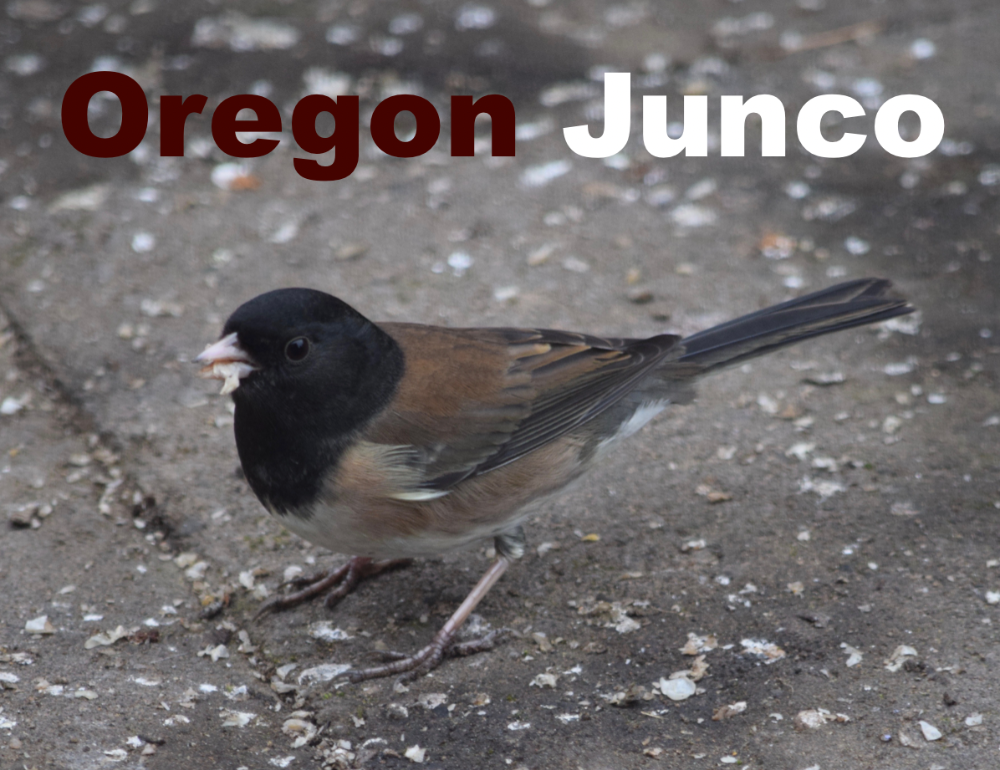
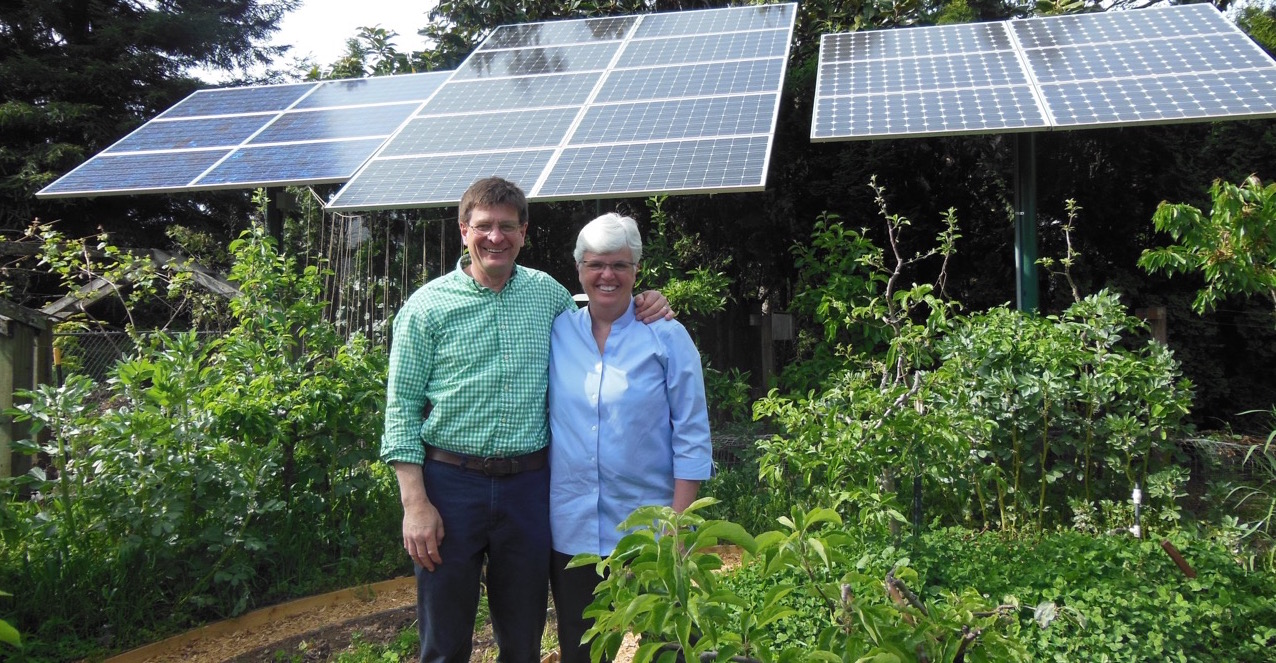


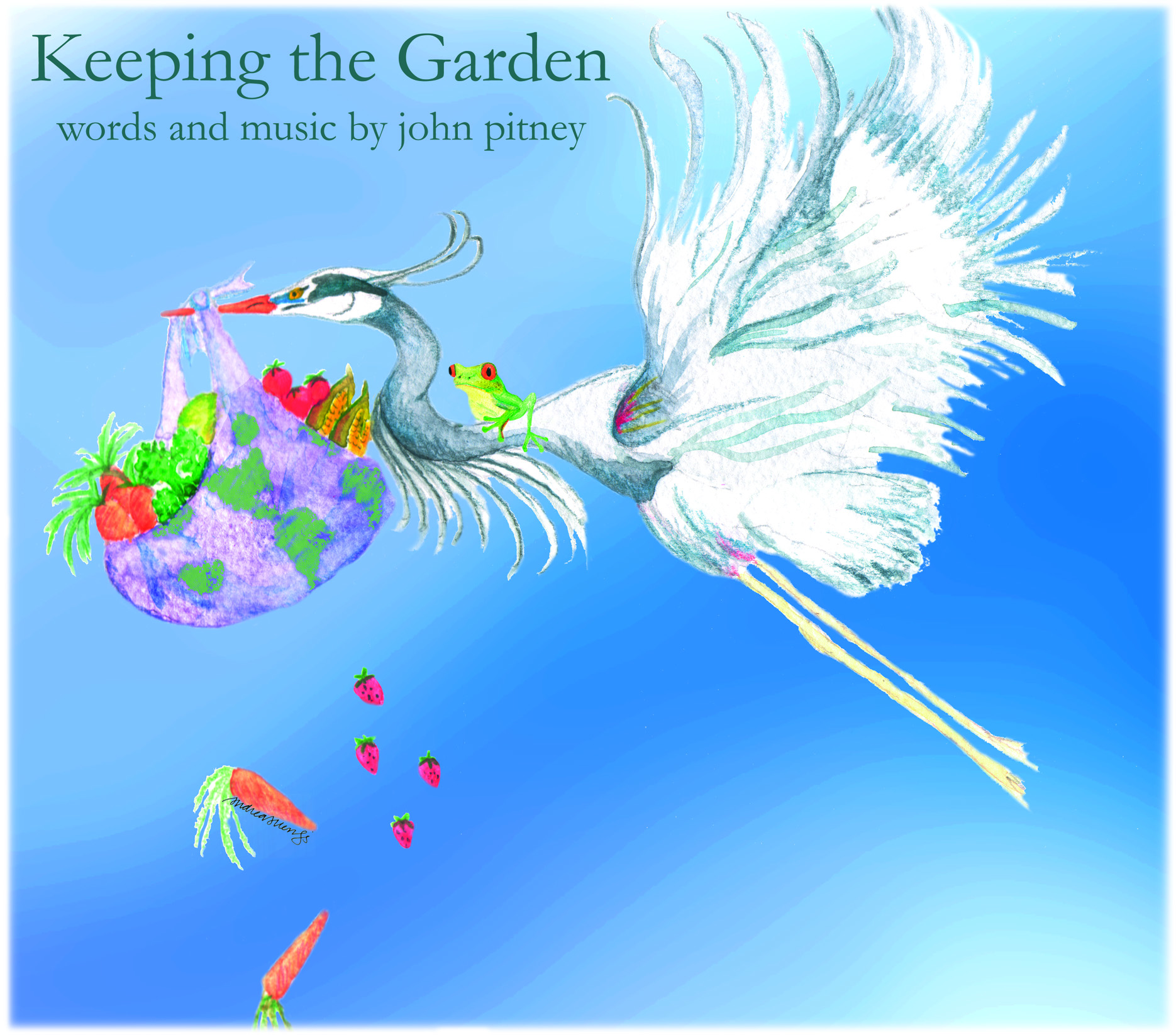
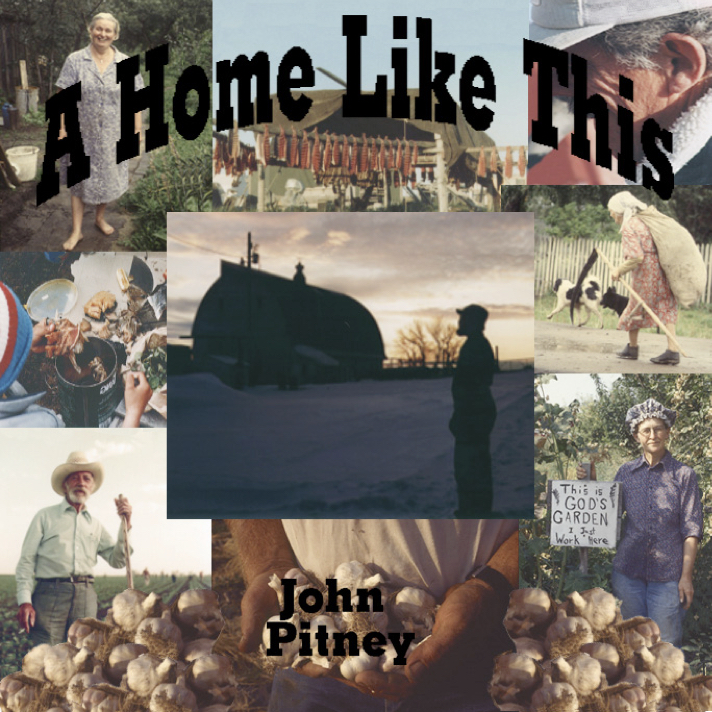
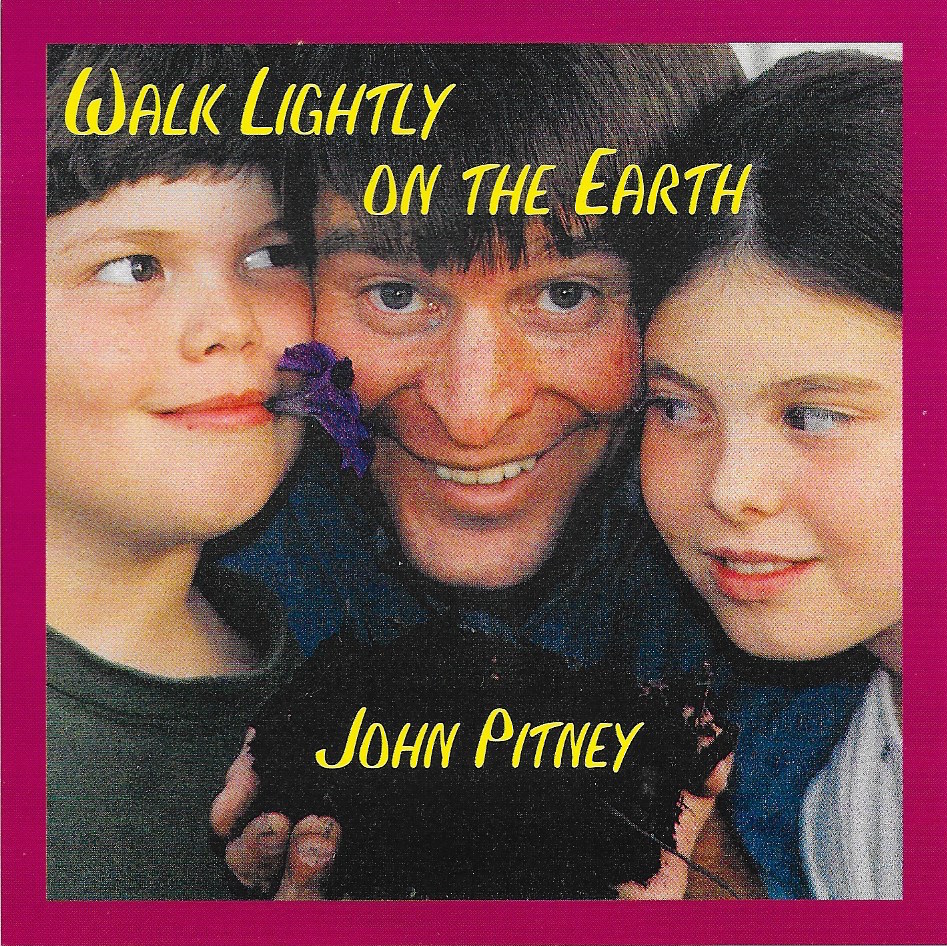

Way to go John. Your words are profound.
Beautifully said, John. I miss all the birds that visited our yard in Eugene. Since it’s turned colder here, we don’t have quite the variety of birds we did when we first moved in. The crows are still around and the geese, but I haven’t seen a heron in a couple weeks.
Thank you! You’ve reminded me of my childhood on Fox Island, and how my mother delighted in each new bird she identified, and learning about them (and sharing that learning)! This is a wonderful time of year!
Thank you John Pitney! What a great article on birds and their plight. I, too, love them and get so excited when a species shows up for the first time in a season. A few days ago we saw the Townsend Warbler on our deck. First time this season!